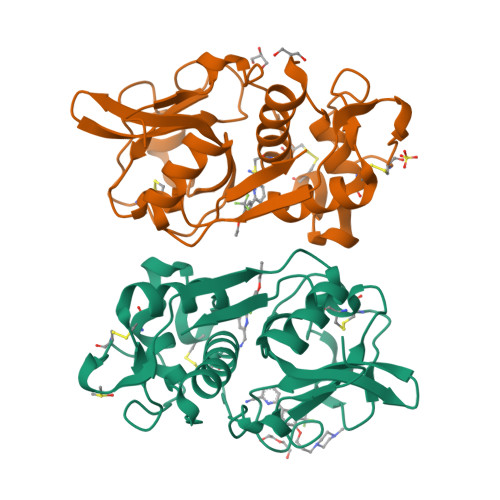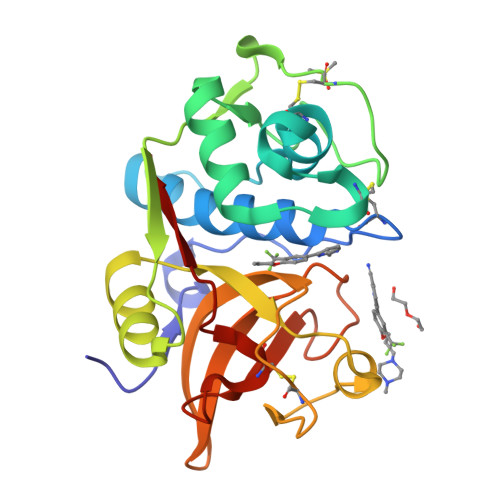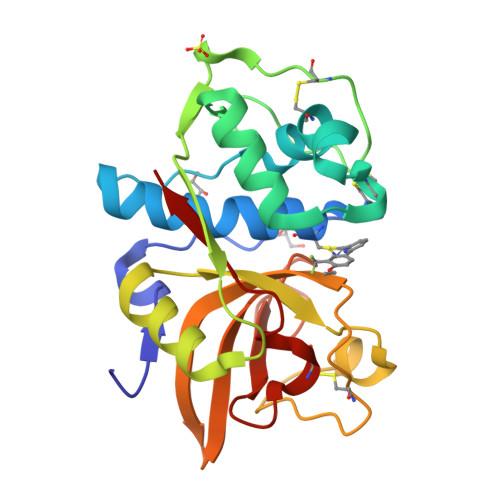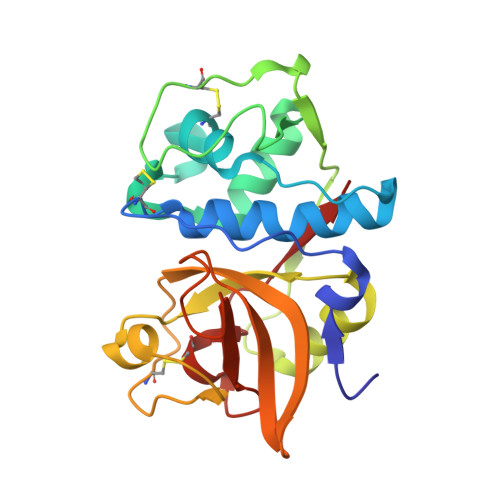4-(3-Trifluoromethylphenyl)-pyrimidine-2-carbonitrile as cathepsin S inhibitors: N3, not N1 is critically important.
Cai, J., Fradera, X., van Zeeland, M., Dempster, M., Cameron, K.S., Bennett, D.J., Robinson, J., Popplestone, L., Baugh, M., Westwood, P., Bruin, J., Hamilton, W., Kinghorn, E., Long, C., Uitdehaag, J.C.(2010) Bioorg Med Chem Lett 20: 4507-4510
- PubMed: 20580231
- DOI: https://doi.org/10.1016/j.bmcl.2010.06.043
- Primary Citation of Related Structures:
3N3G - PubMed Abstract:
Using computer aided modelling studies, a new extended P2/S2 interaction was identified. This extended region can accommodate a variety of functional groups, such as aryls and basic amines. It was discovered that the N3 nitrogen of the pyrimidine-2-carbonitrile is critical for its cathepsin cysteine protease inhibition. N1 nitrogen also contributes to the inhibitory activity, but to a very limited degree. An 'in situ double activation' mechanism was proposed to explain these results.
Organizational Affiliation:
Merck Research Laboratories, MSD, Newhouse, Lanarkshire, UK. jiaqiang.cai@merck.com























